[Windows 11/10] Troubleshooting - Bluetooth Functionality Anomaly Issue
Applicable Products: Notebook, Desktop, All-in-One PC, Gaming Handheld, MiniPC, NUC
If your computer encounters Bluetooth functionality issues (such as inability to connect, missing functionality, frequent disconnections, missing Bluetooth icon, or exclamation marks in Device Manager) when connecting to external Bluetooth devices (including keyboards, mice, phones, speakers, game controllers, etc.), please refer to the troubleshooting steps in this article.
Note: Bluetooth signals are susceptible to interference. It is recommended to keep Bluetooth devices close to your computer and ensure no objects are obstructing the connection to achieve an optimal connection environment.
Note: When using external Bluetooth devices, it is advisable to consult the usage documentation provided by the device manufacturer to ensure proper connection and installation of corresponding drivers or software. If the external Bluetooth device is battery-powered, please also ensure that it has sufficient charge.
To provide you more detailed instruction, you can also click ASUS YouTube video link below to know more about How to Fix Bluetooth connection problems.
https://www.youtube.com/watch?v=LlLL7gv8XUw
Please go to the corresponding instruction based on the current Windows operating system on your device:
Windows 11 operating system
Make sure the Bluetooth is Turned On in Windows
- Click the [Start]
 icon on the taskbar①, then select [Settings]
icon on the taskbar①, then select [Settings] ②.
②. 
- Select [Bluetooth & devices]③, then make sure [Bluetooth] is turned on④.

- If the problem persists, please continue the next troubleshooting step.
Make sure your device has the Bluetooth function and enabled
- Type and search [Device Manager] in the Windows search bar①, then click [Open]②.
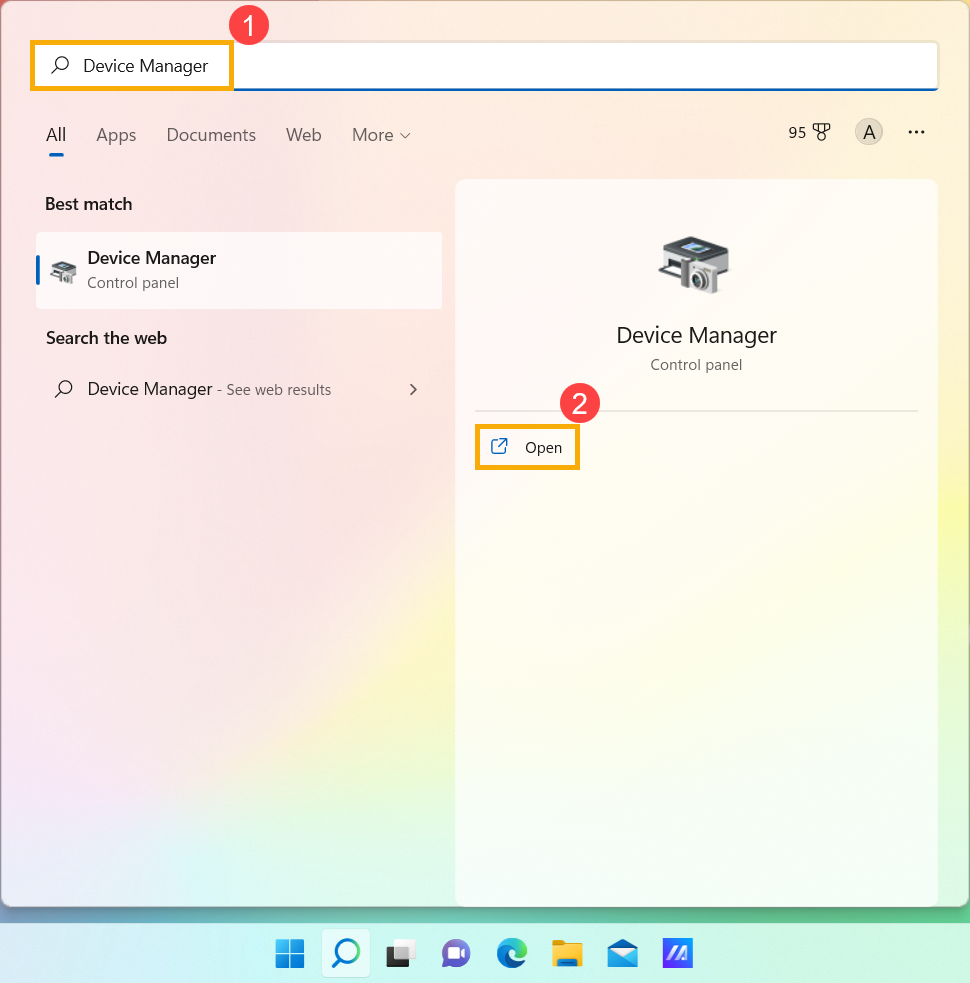
- In [Device Manager], whether the [Bluetooth]③ is existing in the list.
Note: If the [Bluetooth] is not existing, your device does not support it. If the [Bluetooth] is existing, continue to the next step.
- Click the arrow next to [Bluetooth]④. If there is an [arrow marked]⑤ on the Bluetooth icon which is meaning the Bluetooth is disabled, then right-click [Intel(R) Wireless Bluetooth(R)] and select [Enable device]⑥.
Note: The device name may be different based on different models.
- If the problem persists, please continue the next troubleshooting step.
Update BIOS, Windows packages, and drivers
Regularly updating BIOS, Windows, and drivers can enhance system stability and performance. Ensure that your device is using the latest versions. Learn more about updating BIOS:
How to update the BIOS version in Windows system
How to use EZ Flash to update the BIOS version
(For desktop products, please refer to ASUS Motherboard EZ Flash 3 Introduction.)
Learn more about updating Windows and drivers:
How to update drivers via System Update in MyASUS
If the problem persists after you have updated BIOS/Windows packages/drivers to the date, proceed to the next troubleshooting step.
Turn the device off completely
Click the [Start] icon on the taskbar①, select the [Power]
icon on the taskbar①, select the [Power] icon②, then press and hold the [Shift] key③ on the keyboard as well as select [Shut down]④ at the same time. Your device will be turned off completely.
icon②, then press and hold the [Shift] key③ on the keyboard as well as select [Shut down]④ at the same time. Your device will be turned off completely.
After turning the device off completely, please restart your device and check whether the problem is resolved. If the problem persists, please continue the next troubleshooting step.


Run Bluetooth Diagnosis via MyASUS
- Type and search [MyASUS] in the Windows search bar①, then click [Open]②.
Note: If you cannot find MyASUS, it may not be installed on your device. Refer to How to install MyASUS.
- In the MyASUS app, click [System Diagnosis]③.
Note: If your device does not display the system diagnosis page in MyASUS software, it means your device does not support this feature. Continue to the next section for further troubleshooting. Here you can learn more about Why can I only see the partial features in the MyASUS app.
- In [Diagnostic Tool]④, select [Bluetooth] check item of Customized diagnosis⑤, and then click [Checkup]⑥. Here you can learn more about MyASUS System Diagnosis - Introduction.

- After the check, click [Results]⑦. If errors are detected, try the troubleshooting suggestions provided by MyASUS. If the problem persists, proceed to the next troubleshooting step.

Check for the Bluetooth driver update
- In [Device manager], right-click [Intel(R) Wireless Bluetooth(R)]①, then select [Update driver]②.
Note: The device name may be different based on different models. Make sure your device is in an available network environment, then connect to internet because it is an online update process.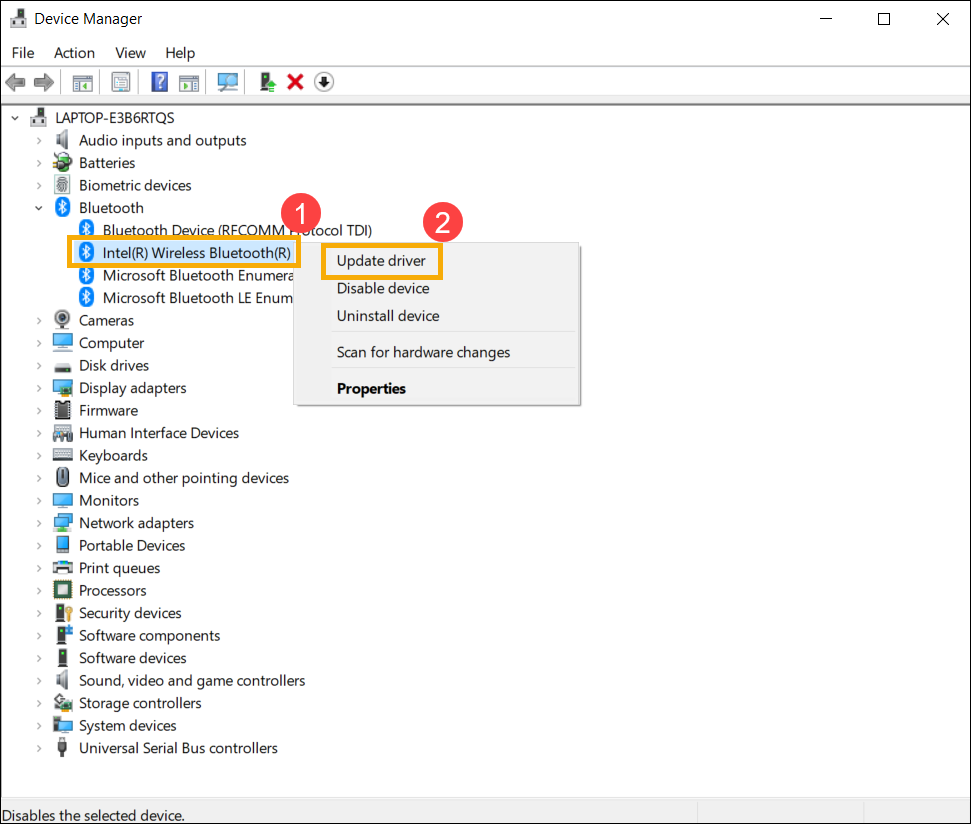
- Click [Search automatically for updated driver software]③.

- Windows is searching online for drivers.
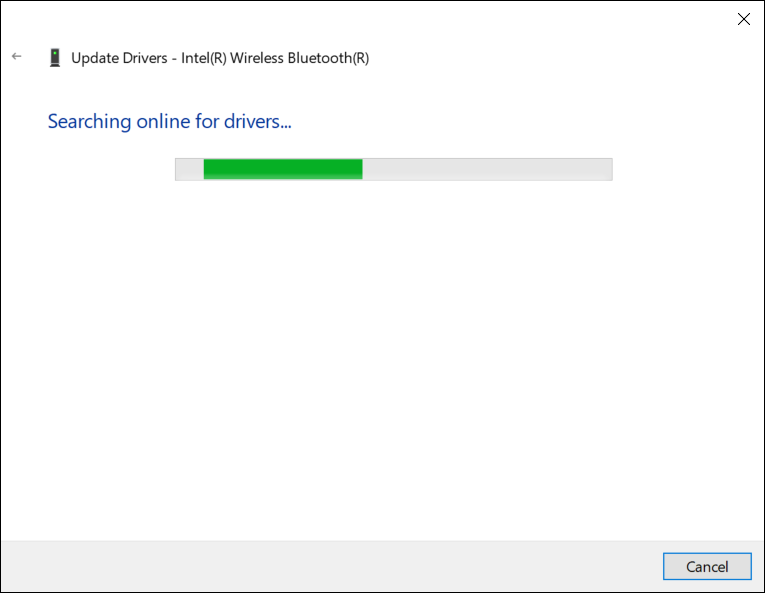
- If an update is unavailable or update is finished but the issue persists. Click [Close]④ and continue to the next step.

Uninstall the Bluetooth driver, then download and install it from ASUS support site
Note: The vendor name of the Bluetooth device may be different even the same model. The vendor name will be used on next steps to pair driver on the ASUS support site, please record it properly. (The vendor name of the Bluetooth device is [Intel] as an example.)

- In [Device manager], right-click [Intel(R) Wireless Bluetooth(R)]①, then select [Uninstall device]②.

- Check the box to [Delete the driver software for this device]③, then select [Uninstall]④.

- Download and install the Bluetooth driver from the ASUS support site. Learn more about How to search and download drivers.
Note: Search for the Bluetooth driver paired with the vendor name which is used on your device. The vendor name of the Bluetooth device is [Intel] as an example.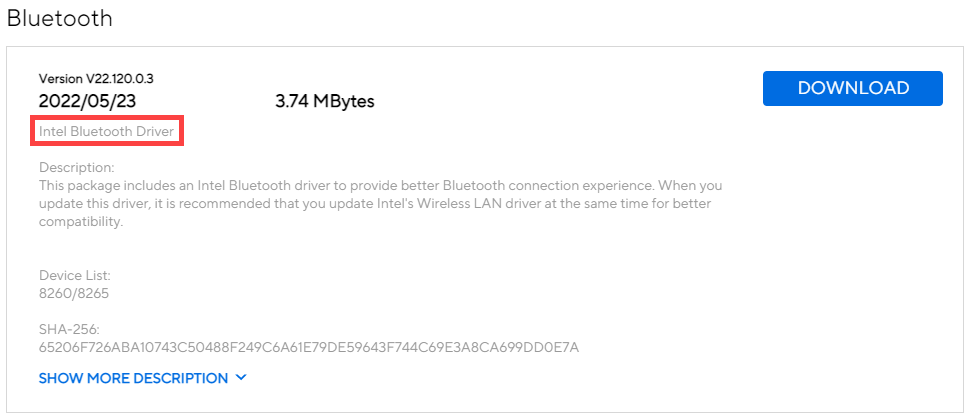
- Please restart the device and try to pair or connect the Bluetooth accessory after installing the driver. If the problem persists, please continue the next troubleshooting step.
Run Bluetooth Troubleshooter
- Type and search [Troubleshoot settings] in the Windows search bar①, then click [Open]②.

- Select [Other troubleshooters]③.

- Click [Run]④ on the Bluetooth option.

- Follow the on-screen prompts to detect and resolve problems. If the problem persists, please continue the next troubleshooting step.
Use Restore Point to restore the system
If the problem happens recently, and if you have ever created a restore point or there is an automatic system restore existed, try to restore the device to a point before the problem began to resolve the problem. Here you can learn more about How to use restore point to restore the system. If the problem persists, please continue the next troubleshooting step.
Reset the system
If the problem persists after all troubleshooting steps are completed. Please backup your personal files, then reset the device to back to its original configuration. Here you can learn more about How to reset the system.
Q & A:
Q1: Why is the Bluetooth icon missing in the taskbar?

A1: Please follow the below steps to show the Bluetooth icon in the taskbar.
- Type and search [Bluetooth and other devices settings] in the Windows search bar①, then click [Open]②.

- Turn on the Bluetooth function③.
Note: If you cannot turn on the Bluetooth function or there are other problems, please refer to the above troubleshooting steps.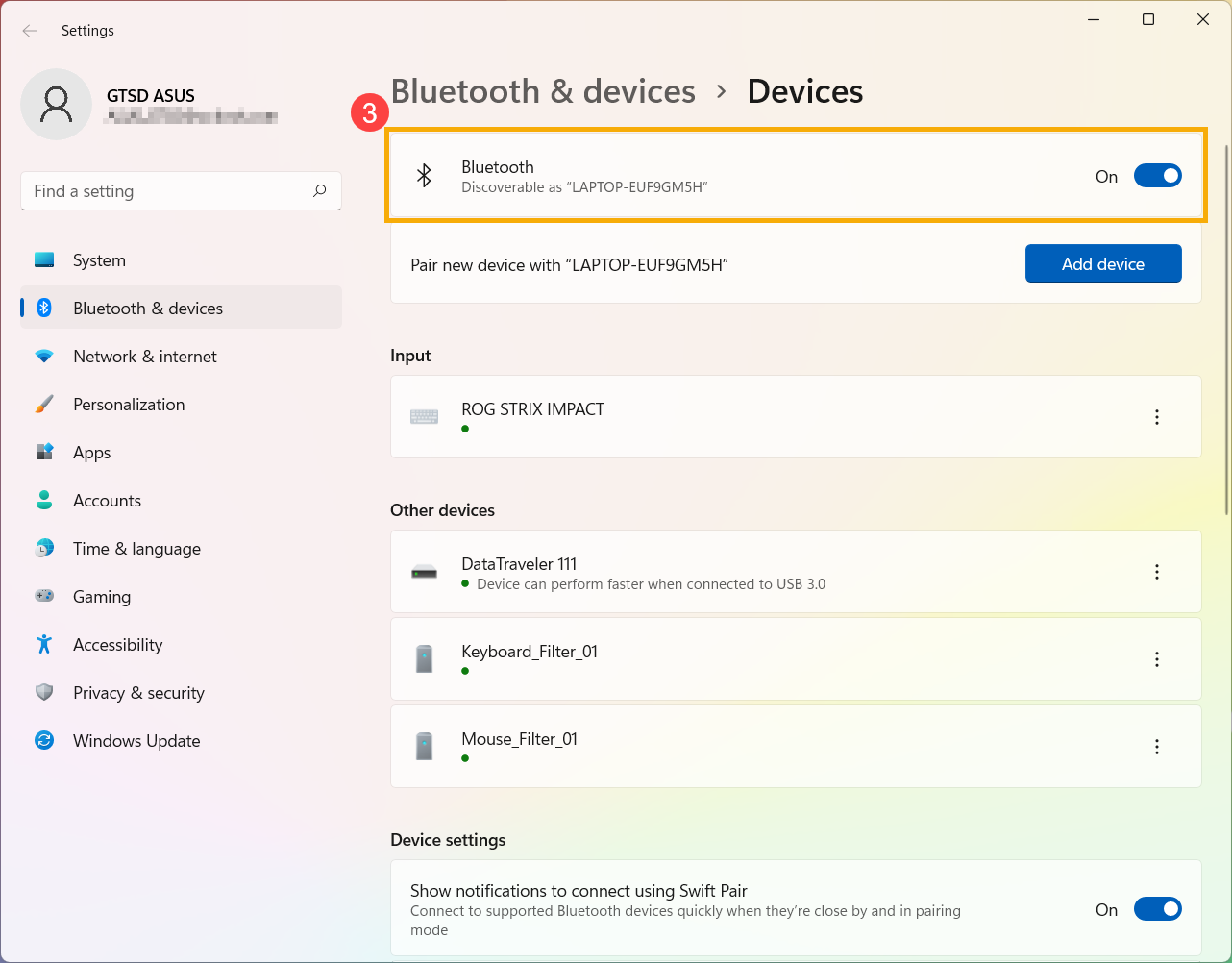
- Scroll down to the bottom of this page, then select [More Bluetooth settings]④.

- Check the box to [Show the Bluetooth icon in the notification area]⑤ and then select [OK]⑥, the Bluetooth icon will show in the taskbar.

Windows 10 operating system
Make sure the Bluetooth is Turned On in Windows
- Click [Start menu]
 ①, then click [Settings]②.
①, then click [Settings]②. 
- Select [Devices]③, then make sure [Bluetooth] is turned on④.


- If the problem persists, please continue the next troubleshooting step.
Make sure your device has the Bluetooth function and enabled
- Right-click [Start menu]
 ①, then select [Device Manager]②.
①, then select [Device Manager]②. 
- In [Device Manager], whether the [Bluetooth]③ is existing in the list.
Note: If the [Bluetooth] is not existing, your device does not support it. If the [Bluetooth] is existing, continue to the next step.
- Click the arrow next to [Bluetooth]④. If there is an [arrow marked]⑤ on the Bluetooth icon which is meaning the Bluetooth is disabled, then right-click [Intel(R) Wireless Bluetooth(R)] and select [Enable device]⑥.
Note: The device name may be different based on different models.
- If the problem persists, please continue the next troubleshooting step.
Update BIOS, Windows packages, and drivers
Regularly updating BIOS, Windows, and drivers can enhance system stability and performance. Ensure that your device is using the latest versions. Learn more about updating BIOS:
How to update the BIOS version in Windows system
How to use EZ Flash to update the BIOS version
(For desktop products, please refer to ASUS Motherboard EZ Flash 3 Introduction.)
Learn more about updating Windows and drivers:
How to update drivers via System Update in MyASUS
If the problem persists after you have updated BIOS/Windows packages/drivers to the date, proceed to the next troubleshooting step.
Turn the device off completely
Click the [Start] icon on the far left of the taskbar①, select the [Power]
icon on the far left of the taskbar①, select the [Power] icon②, then press and hold the [Shift] key③ on the keyboard as well as select [Shut down]④ at the same time. Your device will be turned off completely.
icon②, then press and hold the [Shift] key③ on the keyboard as well as select [Shut down]④ at the same time. Your device will be turned off completely.
After turning the device off completely, please restart your device and check whether the problem is resolved. If the problem persists, please continue the next troubleshooting step.


Run Bluetooth Diagnosis via MyASUS
- Type and search [MyASUS] in the Windows search bar①, then click [Open]②.
Note: If you cannot find MyASUS, it may not be installed on your device. Refer to How to install MyASUS.
- In the MyASUS app, click [System Diagnosis]③.
Note: If your device does not display the system diagnosis page in MyASUS software, it means your device does not support this feature. Continue to the next section for further troubleshooting. Here you can learn more about Why can I only see the partial features in the MyASUS app.
- In [Diagnostic Tool]④, select [Bluetooth] check item of Customized diagnosis⑤, and then click [Checkup]⑥. Here you can learn more about MyASUS System Diagnosis - Introduction.

- After the check, click [Results]⑦. If errors are detected, try the troubleshooting suggestions provided by MyASUS. If the problem persists, proceed to the next troubleshooting step.

Check for the Bluetooth driver update
- In [Device manager], right-click [Intel(R) Wireless Bluetooth(R)]①, then select [Update driver]②.
Note: The device name may be different based on different models. Make sure your device is in an available network environment, then connect to internet because it is an online update process.
- Click [Search automatically for updated driver software]③.

- Windows is searching online for drivers.

- If an update is unavailable or update is finished but the issue persists. Click [Close]④ and continue to the next step.

Uninstall the Bluetooth driver, then download and install it from ASUS support site
Note: The vendor name of the Bluetooth device may be different even the same model. The vendor name will be used on next steps to pair driver on the ASUS support site, please record it properly. (The vendor name of the Bluetooth device is [Intel] as an example.)

- In [Device manager], right-click [Intel(R) Wireless Bluetooth(R)]①, then select [Uninstall device]②.

- Check the box to [Delete the driver software for this device]③, then select [Uninstall]④.

- Download and install the Bluetooth driver from the ASUS support site. Learn more about How to search and download drivers.
Note: Search for the Bluetooth driver paired with the vendor name which is used on your device. The vendor name of the Bluetooth device is [Intel] as an example.
- Please restart the device and try to pair or connect the Bluetooth accessory after installing the driver. If the problem persists, please continue the next troubleshooting step.
Run Bluetooth Troubleshooter
- Type and search [Troubleshoot settings] in the Windows search bar①, then click [Open]②.

- Select [Additional troubleshooters]③.

- Select [Bluetooth]④, then click [Run the troubleshooter]⑤.

- Follow the on-screen prompts to detect and resolve problems. If the problem persists, please continue the next troubleshooting step.
Use Restore Point to restore the system
If the problem happens recently, and if you have ever created a restore point or there is an automatic system restore existed, try to restore the device to a point before the problem began to resolve the problem. Here you can learn more about How to use restore point to restore the system. If the problem persists, please continue the next troubleshooting step.
Reset the system
If the problem persists after all troubleshooting steps are completed. Please backup your personal files, then reset the device to back to its original configuration. Here you can learn more about How to reset the system.
Q & A:
Q1: Why is the Bluetooth icon missing in the taskbar?

A1: Please follow the below steps to show the Bluetooth icon in the taskbar.
- Type and search [Bluetooth and other devices settings] in the Windows search bar①, then click [Open]②.

- Turn on the Bluetooth function③, then select [More Bluetooth options]④.
Note: If you cannot turn on the Bluetooth function or there are other problems, please refer to the above troubleshooting steps.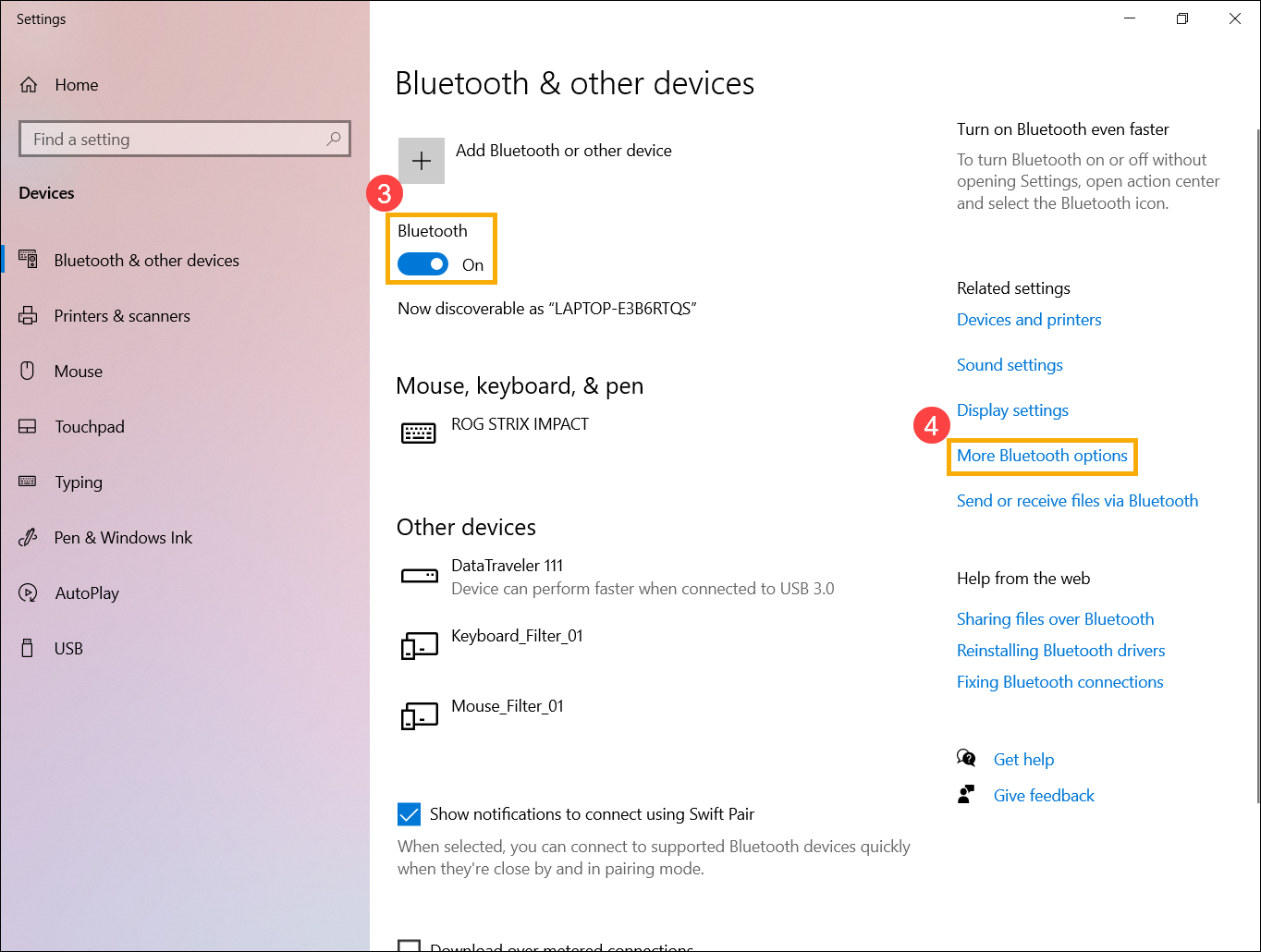
- Check the box to [Show the Bluetooth icon in the notification area]⑤ and then select [OK]⑥, the Bluetooth icon will show in the taskbar.

If your issue remains unresolved, please contact the ASUS customer service center for further assistance.